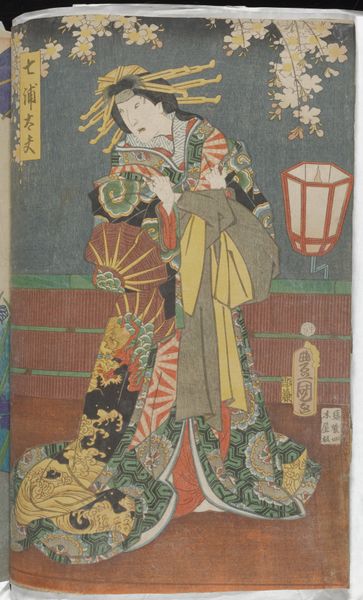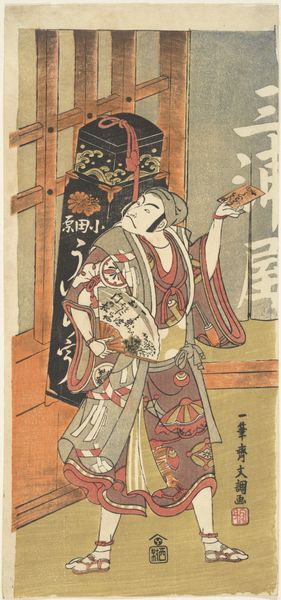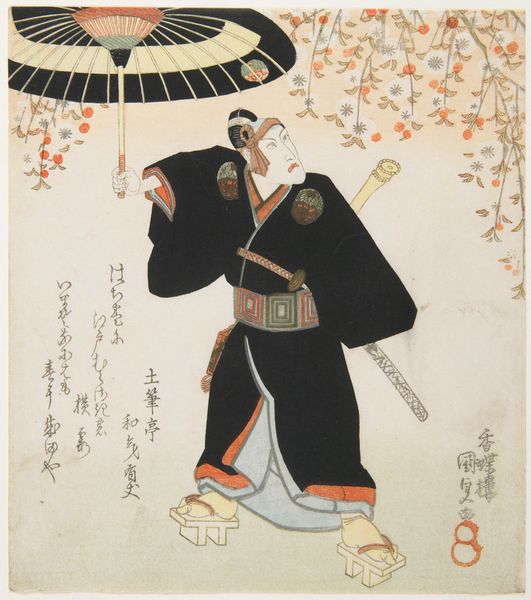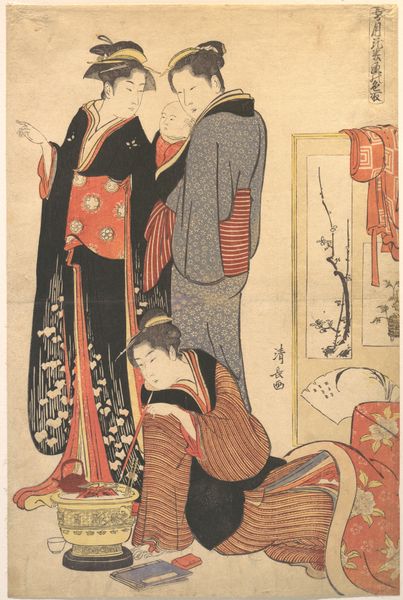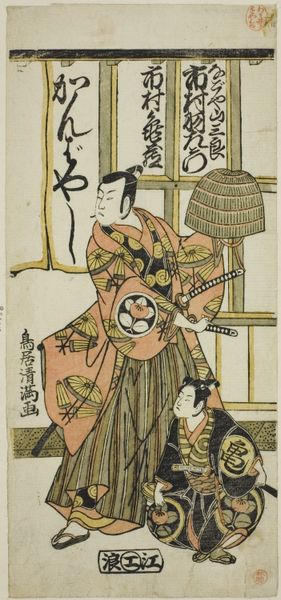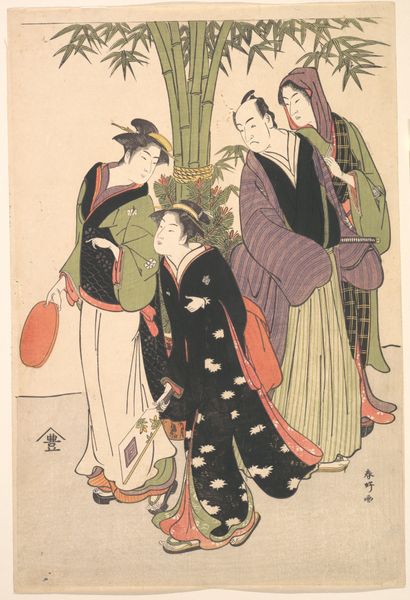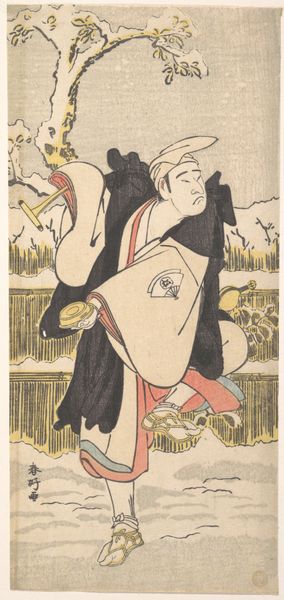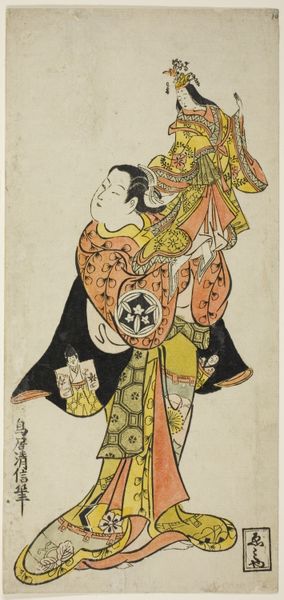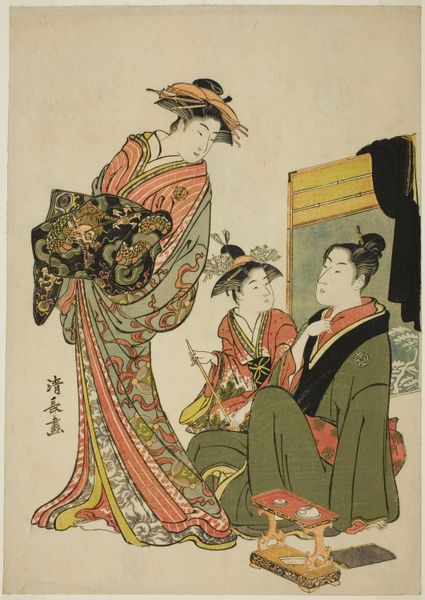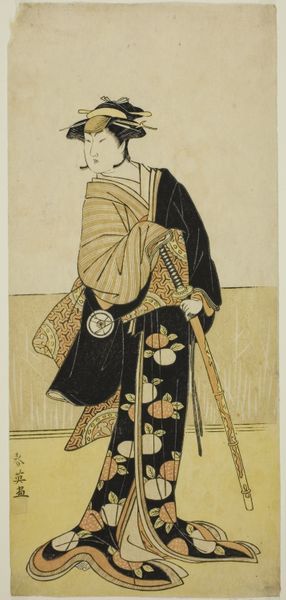
Ichikawa Yaozo III in the Role of Sukeroku from the Play "Yukari no Edo-sakura", also known as "Sukeroku" 1784
0:00
0:00
print, woodblock-print
#
portrait
# print
#
asian-art
#
ukiyo-e
#
woodblock-print
#
men
#
genre-painting
Dimensions: 15 1/4 x 10 1/4 in. (38.7 x 26 cm)
Copyright: Public Domain
Curator: Let's turn our attention to this striking woodblock print by Torii Kiyonaga, dating back to 1784. It’s titled "Ichikawa Yaozo III in the Role of Sukeroku from the Play Yukari no Edo-zakura," often simply referred to as "Sukeroku". It’s currently held in the Metropolitan Museum of Art. Editor: It's really dynamic! The central figure dominates the composition with his imposing stance and raised umbrella. I am drawn to the patterns: the umbrella and the fabrics bring so much depth, even despite the flat picture plane. Curator: The print belongs to the Ukiyo-e tradition, a genre deeply intertwined with the popular culture of Edo-period Japan. The subject matter, a Kabuki actor in a celebrated role, gives insight into the social and theatrical world of the time. Editor: I see. Speaking formally, the artist is brilliant in limiting color. I wonder how that affects our reading of form in the composition? There is definitely visual tension in play through line and silhouette. Curator: This piece goes beyond simple representation, delving into the construction of masculinity and celebrity within Edo society. Sukeroku, the protagonist, embodies a kind of rebellious swagger. Look at the subtle but proud and intense upward lift of his gaze. Editor: Semiotically speaking, that’s quite right! And structurally speaking, I am drawn to the fact that the other figures in the print surround the main character. Our sight-line is being directed back and forth, between Sukeroku's gesture, the seated figure's lifted face, and then the feminine figure to the right! It makes me feel like I am walking into a stage! Curator: Absolutely, and consider the social implications of Ukiyo-e itself. These prints were mass-produced, making art accessible to a broad audience. This challenges elitist notions of art as purely the domain of the upper classes. They democratized image-making in their moment. Editor: And even looking just at color... there is definitely symbolic language being built into how color works on form! Thinking now in terms of signifiers: red calls to the background... perhaps to tradition or the setting of theater? Curator: The work offers rich insights into the representation of gender, class, and theatricality in Edo Japan. It’s more than just a pretty picture; it's a window into a complex and fascinating culture. Editor: And for me, it is so satisfying as an image in itself... I want to look at the colors, textures, and lines again and again, finding something new each time.
Comments
No comments
Be the first to comment and join the conversation on the ultimate creative platform.
